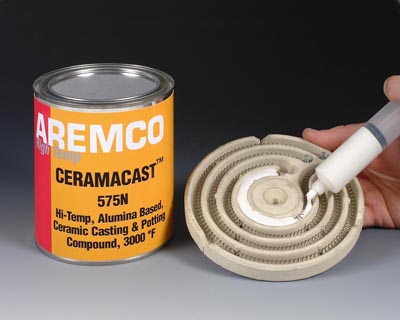What? When? Why?
Latest Happenings in Business World
17
Sep-2019
Take Advantage Of Ceramic Adhesives Market
Ceramic Adhesives Market was valued at USD 6.82 billion in 201 and is expected to reach USD 8.84 billion in 2023, at a compound annual rate of 5.1% from 2018 to 2023. The overall demand for ceramic tile adhesive can be segmented according to soil type, product type, application, end-use, and area.

Introduction:
Ceramics can be easily assembled using conventional organic adhesives. However, the temperature capacity of these adhesives is very limiting, for example, epoxy and phenolic adhesives can be used up to a temperature of about 150 ° C. Ceramics are often used for their high-temperature capabilities. Adhesives ceramics are the most used.
Several ceramic adhesives have been developed which offer a service temperature up to 2200 ° C. They are based on inorganic binders such as alkali silicates and various metal phosphates, with a carbon powder charge, alumina, silica, magnesia or zirconia. These ceramic-based adhesives are available in one- or two-part systems and have a physical form similar to that of organic adhesives. The bonding agent is generally reacted with the ceramic powder to provide a refractory ceramic which adheres to a ceramic base.
Ceramic glue is a type of hybrid organic material used in recent decoration. The ceramic adhesive replaced the conventional adhesive material. Ceramic adhesive replaces cement and bricks. The factor responsible for the growth of the ceramic adhesives market is the steady rise in residential construction, driven by the demographic growth of developing countries in the current scenario.
Ceramic Adhesives Market Growth:
The transition to environmentally friendly and environmentally friendly products is one of the main trends that is expected to gain momentum in the marketplace. Organic adhesives are becoming increasingly popular in developing economies. This has encouraged companies to make significant investments in the development of environmentally friendly and less hazardous ceramic adhesives with zero emissions and VOC content. With the growth of infrastructure development projects and construction activities, the need for organic adhesives will increase further in the coming years.
Ceramic Adhesives Market Forecasts:
Depending on the type of chemistry used, the cement segment of cement-based ceramic adhesives is expected to grow at a high CAGR, both in volume and value.
The growth of the cement-based ceramic adhesives market segment can be attributed to the low cost of cement-based ceramic adhesives and their outstanding bonding characteristics. Inorganic cement-based ceramic adhesives offer better performance at high temperatures than conventional polymers. In addition, these adhesives are extremely durable and offer high cut resistance, making them the most important component on any construction site. Cement-based ceramic adhesives have the ability to store and diffuse heat. Inorganic cement-based ceramic adhesives are made from high-quality materials, including binders, additives, and other ceramics. These inorganic cement-based ceramic adhesives offer excellent bonding strength, high-temperature resistance, and superior thermal and electrical insulation.
Ceramic Adhesives Market Regional analysis:
The ceramic adhesive market for the Asia-Pacific region is expected to experience the strongest growth over the period, in both value and volume terms. The ceramic adhesive manufacturers cater to the Asia-Pacific region, which has the largest construction industry in the world, accounting for 40% of the world's construction expenditures.
The ceramic adhesives market in China is expected to experience significant growth over the forecast period as a result of the constant change in the ceramic adhesive production facilities of several companies in the country. Countries such as India, Thailand, and Indonesia are seeing increased investment in their construction and construction sectors, which is likely to influence the growth of the ceramic adhesives market in these countries.
Benefits:
- One component, easy to use the system.
- An inorganic system without VOCs or hydrocarbons - compatible with high vacuum
- Wide temperature range: cryogenic to 1650 ° C (3000 ° F)
- High electrical and thermal resistance.
- Good mechanical resistance
- High chemical resistance
Key Stakeholders:
- Manufacturers of ceramic adhesives and their raw materials.
- Suppliers of raw materials
- Manufacturers of ceramic adhesives used in various application industries
- Dealers, distributors, and suppliers of ceramic adhesives.
- Regional associations of manufacturers of ceramic adhesives and general associations of ceramic adhesives
- Non-Governmental Organizations, Governments, Investment Banks, Venture Capitalists, and Private Equity Firms

WRITTEN BY: Karthik Thelakula
Karthik Thelakula is a Content Writer in Market Data Forecast, one of the world’s leading research and consulting for various business domains, individuals and corporate clients
CATEGORY
RECENT POST
CLIENTS








































.png)










.png)























































